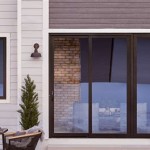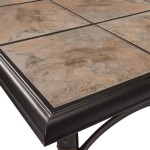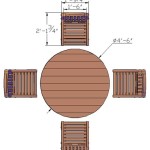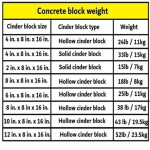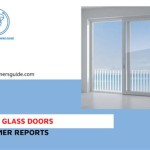Aluminum White Sliding Insect Screen For Patio Doors: A Comprehensive Overview
Patio doors offer a seamless transition between indoor and outdoor living spaces, providing natural light and ventilation. However, open patio doors can also invite unwanted insects into the home. An aluminum white sliding insect screen provides a practical and aesthetically pleasing solution to this problem, allowing homeowners to enjoy the benefits of open doors without the intrusion of bugs. This article provides a comprehensive overview of aluminum white sliding insect screens for patio doors, covering their advantages, materials, installation, maintenance, and selection criteria.
The primary function of a sliding insect screen is to create a barrier against insects while permitting airflow. The screen is designed to slide horizontally along a track system, mirroring the functionality of the patio door itself. The white aluminum frame provides a durable and visually appealing border to the screen mesh, blending seamlessly with many common patio door frame colors and architectural styles. The use of aluminum ensures resistance to rust and corrosion, making it suitable for outdoor use in various climates.
The screen mesh itself is typically constructed from fiberglass or aluminum, each offering distinct characteristics. Fiberglass mesh is a cost-effective option that provides good insect protection and visibility. Aluminum mesh, while more expensive, is more durable and resistant to damage from pets or weather. The screen mesh is held taut within the aluminum frame, ensuring a tight barrier against insects. The sliding mechanism usually incorporates rollers or glides, allowing the screen to move smoothly and quietly along the track.
Key Advantages of Aluminum White Sliding Insect Screens
Selecting an appropriate insect screen for patio doors involves considering the numerous benefits offered by an aluminum white sliding design. These advantages encompass functionality, durability, aesthetics, and overall value.
Enhanced Insect Protection: The primary benefit of a sliding insect screen is its ability to effectively block insects from entering the home. The fine mesh creates a barrier that prevents mosquitoes, flies, spiders, and other pests from invading indoor spaces. This is particularly important in areas with high insect populations or during seasons when insects are more active. The tight fit of the screen within the frame and the smooth sliding mechanism ensures minimal gaps that could allow insects to bypass the barrier. Regular cleaning and maintenance of the screen further contribute to its effectiveness in preventing insect entry.
Improved Ventilation and Natural Light: While providing insect protection, the sliding screen allows for unobstructed airflow and natural light to enter the home. This enhances the living environment by promoting better air circulation and reducing the need for artificial lighting. Natural ventilation can help regulate indoor temperatures and reduce reliance on air conditioning, leading to energy savings. The screen mesh is designed to minimize obstruction of airflow and light, ensuring a comfortable and well-lit indoor space. Opting for a screen mesh with a higher openness factor can further maximize airflow and light penetration.
Durability and Longevity: Aluminum is a highly durable material that is resistant to rust, corrosion, and weathering. This makes aluminum white sliding insect screens suitable for long-term outdoor use in various climates. The aluminum frame provides structural support to the screen mesh, preventing it from sagging or tearing. The white finish is typically powder-coated, providing additional protection against scratches and fading. Regular cleaning and maintenance can further extend the lifespan of the insect screen. Choosing a high-quality aluminum frame ensures that the screen can withstand the rigors of daily use and environmental exposure.
Aesthetic Appeal: The white aluminum frame offers a clean and modern aesthetic that complements a wide range of patio door styles and home designs. The neutral color blends seamlessly with most exterior and interior color palettes, providing a cohesive look. The sleek design of the sliding screen enhances the overall appearance of the patio door and adds to the value of the home. The unobtrusive nature of the screen ensures that it does not detract from the view of the outdoors. Homeowners can further customize the look of the screen by choosing different mesh colors or frame designs.
Ease of Use and Maintenance: Sliding insect screens are designed for easy operation, allowing homeowners to quickly and easily open or close the screen as needed. The smooth sliding mechanism ensures that the screen moves effortlessly along the track. The screen requires minimal maintenance, typically involving occasional cleaning with soap and water. The durable materials used in construction ensure that the screen can withstand regular use without requiring frequent repairs or replacements. The lightweight design of the aluminum frame makes it easy to handle and maneuver.
Increased Home Value: Installing an aluminum white sliding insect screen can increase the overall value of a home by providing added functionality and aesthetic appeal. Potential homebuyers appreciate the benefits of insect protection, improved ventilation, and natural light. The durable construction and attractive design of the screen add to the perceived value of the home. The screen can be considered a valuable upgrade that enhances the living experience and makes the home more desirable.
Materials and Construction
The materials used in the construction of an aluminum white sliding insect screen are critical to its performance, durability, and aesthetic appeal. Understanding the properties of these materials can help homeowners make informed decisions when selecting a screen for their patio door.
Aluminum Frame: The frame of the sliding insect screen is typically constructed from extruded aluminum. Aluminum is chosen for its strength, lightweight properties, and resistance to corrosion. The aluminum frame provides structural support to the screen mesh, ensuring that it remains taut and secure. The white finish is typically applied through a powder-coating process, which provides a durable and aesthetically pleasing surface. Powder-coating also protects the aluminum from scratches, fading, and other forms of damage. The aluminum frame is designed to withstand the rigors of outdoor use and maintain its integrity over time.
Screen Mesh: The screen mesh is the barrier that prevents insects from entering the home. Two common types of screen mesh are fiberglass and aluminum. Fiberglass mesh is a cost-effective option that provides good insect protection and visibility. It is flexible and easy to install, but it is also more susceptible to damage from pets or weather. Aluminum mesh is more durable and resistant to damage, making it a better option for homes with pets or in areas with harsh weather conditions. Aluminum mesh is also more resistant to sagging and tearing, ensuring a longer lifespan. The mesh is typically woven into a tight pattern to prevent even small insects from passing through.
Rollers and Glides: The sliding mechanism of the insect screen relies on rollers or glides that allow the screen to move smoothly along the track. These rollers or glides are typically made from durable plastic or metal. High-quality rollers or glides ensure that the screen operates smoothly and quietly. Regular cleaning and lubrication of the rollers or glides can help maintain their performance and extend their lifespan. The design of the sliding mechanism is critical to the overall functionality and ease of use of the insect screen.
Track System: The track system is the framework that guides the sliding insect screen along the patio door frame. The track is typically made from aluminum or plastic. Aluminum tracks are more durable and resistant to damage, while plastic tracks are more cost-effective. The track system must be properly aligned and installed to ensure smooth and reliable operation of the screen. The track system is designed to accommodate the rollers or glides, allowing the screen to move freely and without obstruction.
Hardware and Fasteners: The hardware and fasteners used to assemble and install the insect screen are typically made from stainless steel or other corrosion-resistant materials. These materials ensure that the screen remains securely attached to the patio door frame and that the hardware does not rust or corrode over time. The hardware and fasteners are designed to withstand the rigors of outdoor use and maintain their integrity in various weather conditions. Proper installation of the hardware and fasteners is critical to the overall stability and functionality of the insect screen.
Installation and Maintenance
Proper installation and regular maintenance are essential to ensure the longevity and effectiveness of an aluminum white sliding insect screen. These practices contribute to optimal performance and prevent premature wear and tear.
Installation Process: The installation of a sliding insect screen typically involves several steps. First, the existing patio door frame must be properly prepared, ensuring that it is clean and free of debris. Next, the track system is installed along the top and bottom of the patio door frame. The screen is then carefully placed within the track, ensuring that the rollers or glides are properly aligned. Finally, the screen is tested to ensure that it slides smoothly and that the latching mechanism functions correctly. Proper installation is critical to the overall performance and longevity of the insect screen. It is recommended to follow the manufacturer's instructions carefully or to hire a professional installer to ensure that the screen is installed correctly.
Cleaning and Maintenance: Regular cleaning and maintenance are essential to keep the insect screen in good condition. The screen mesh should be cleaned periodically to remove dirt, dust, and debris. This can be done using a soft brush or cloth and a mild soap and water solution. Avoid using harsh chemicals or abrasive cleaners, as these can damage the screen mesh and frame. The rollers or glides should also be cleaned and lubricated periodically to ensure smooth operation. The track system should be inspected regularly to ensure that it is free of debris and that the screen slides smoothly. Any damaged or worn parts should be replaced promptly to prevent further damage. Regular maintenance can help extend the lifespan of the insect screen and ensure that it continues to provide effective insect protection.
Repair and Replacement: Over time, the insect screen may require repair or replacement due to wear and tear or damage. Common repairs include replacing damaged screen mesh, repairing or replacing rollers or glides, and tightening loose hardware. In some cases, it may be necessary to replace the entire screen if the frame is damaged beyond repair. When replacing parts or the entire screen, it is important to choose high-quality components that are compatible with the existing patio door frame. Proper repair and replacement can help extend the lifespan of the insect screen and ensure that it continues to provide effective insect protection.
Seasonal Considerations: It is important to consider seasonal factors when maintaining an aluminum white sliding insect screen. During the winter months, it may be necessary to remove the screen and store it in a safe place to protect it from harsh weather conditions. Before storing the screen, it should be thoroughly cleaned and dried to prevent mold and mildew growth. In the spring, the screen should be reinstalled and inspected for any damage or wear. Proper seasonal maintenance can help extend the lifespan of the insect screen and ensure that it is ready for use when needed.
By understanding the advantages, materials, installation, and maintenance requirements of aluminum white sliding insect screens for patio doors, homeowners can make informed decisions and ensure that their screens provide effective insect protection, improved ventilation, and long-lasting performance.

American Craftsman 50 Series 29 5 In X 77 875 White Aluminum Sliding Patio Insect Screen Door 70 0 The Home Depot

American Craftsman 50 Series 29 5 In X 77 875 White Aluminum Sliding Patio Insect Screen Door 70 0 The Home Depot

Sliding Fly Screen For Patio Doors Diy Kit Streme

Andersen 35 1 8 In X 77 9 16 200 Series White Perma Shield Gliding Patio Door Aluminum Insect Screen 2505930 The Home Depot

American Craftsman 50 And 70 Series 35 5 In X 77 875 White Aluminum Sliding Patio Insect Screen Door 6 0 The Home Depot

American Craftsman 50 And 70 Series 35 5 In X 77 875 White Aluminum Sliding Patio Insect Screen Door 6 0 The Home Depot

Sliding Fly Screen For Patio Doors Diy Kit Streme

Sliding Fly Screen For Patio Doors Diy Kit Streme

Sliding Fly Screen For Patio Doors Diy Kit Streme

Andersen 35 1 2 In X 77 9 16 400 Series White Frenchwood Gliding Patio Door Aluminum Insect Screen 2565308 The Home Depot

